| Plant |
Origin |
Picture |
| Chocolate |
About 4,000 years ago chocolate (cacao) had its origins in
the tropical rainforests of the Americas. The Maya and the Aztecs were
the first people to make chocolate. The Aztecs valued it so much that
the used it like money. The chocolate that they drank was mixed with spices
and didn't resemble the chocolate that we drink today.
http://www.fieldmuseum.org/chocolate/history.html
Photo: Coco pods, Matura, Trinidad, West Indies by Karen Retford 2003 |
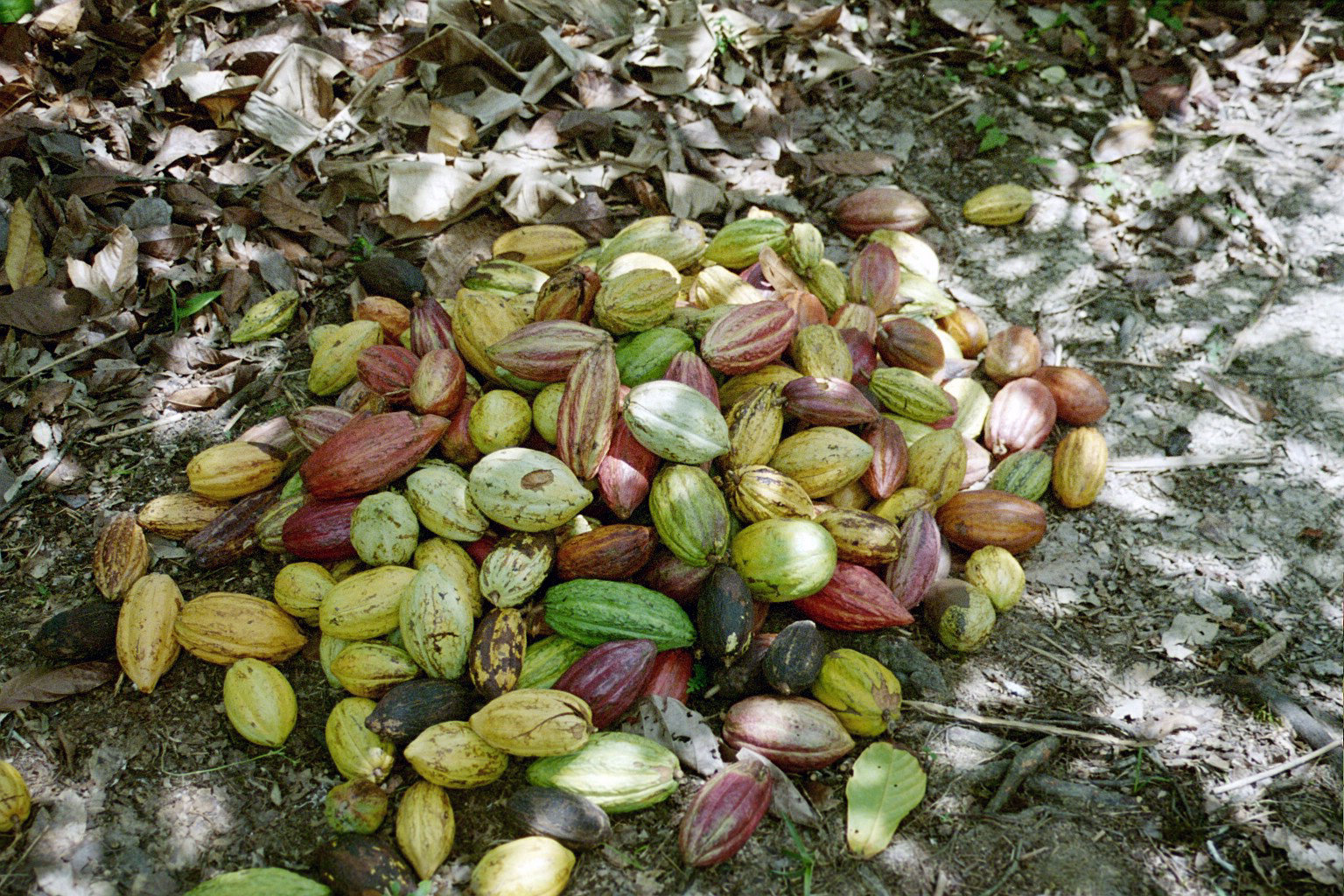 |
| Cashew |
The cashew is native to the Northern part of South America.
The name comes from the Portuguese 'caju' which they borrowed from the Tupi-Indian
'acaju'. The Portuguese took the nut to India and Africa during the
1500's.
http://www.achalcashew.com/historyofcashewnut.htm
http://www.uga.edu/fruit/cashew.htm
Photo: Cashews, Matura, Trinidad, West Indies by Karen Retford 2003 |
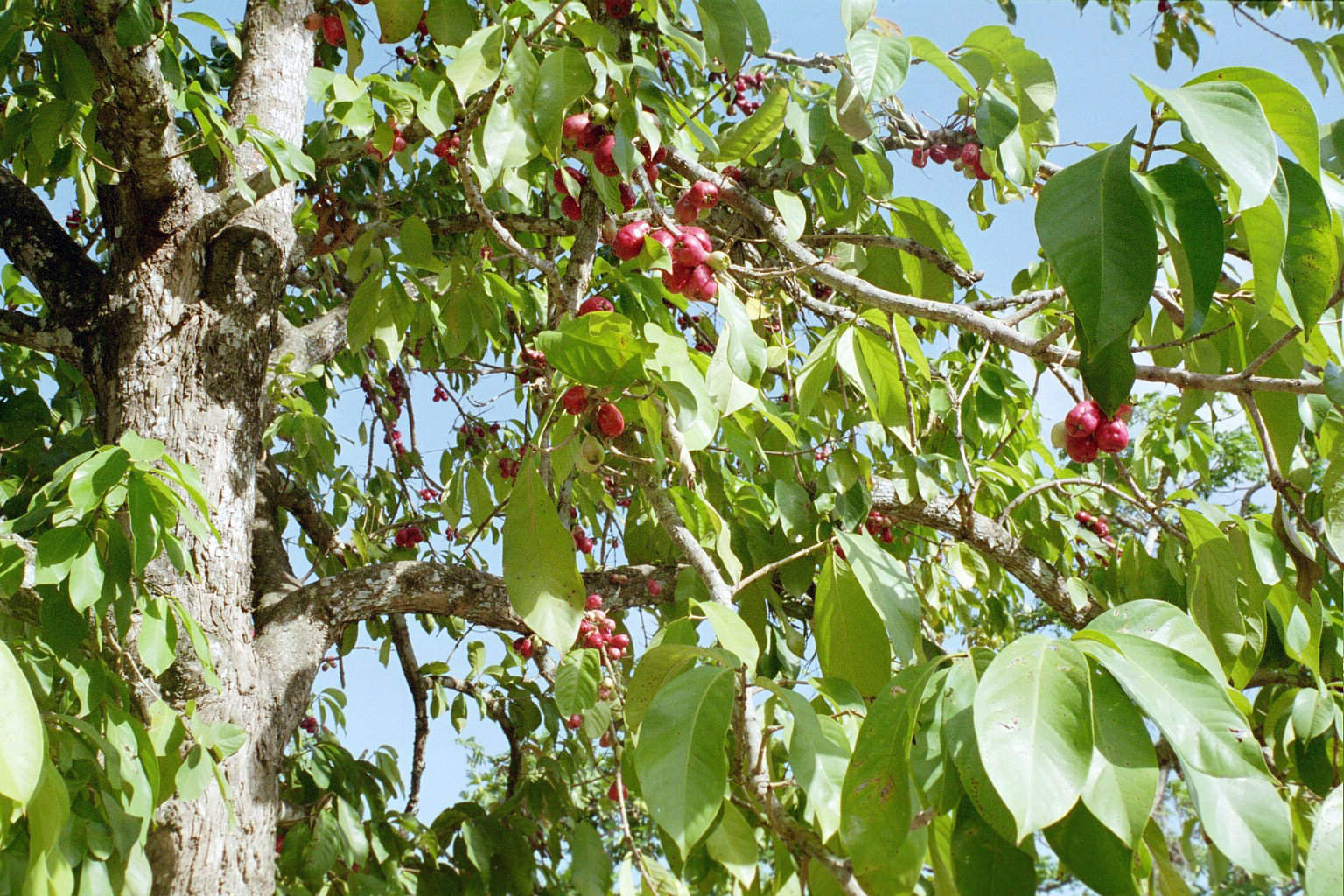 |
| Coffee |
Coffee originated before 1000 AD in Ethiopia on the
continent of Africa. About 1000 AD Arab traders brought coffee to
their homeland and began cultivating it. The Turks were the first to
adopt it as a drink. It was considered very precious and guarded
closely. The spread of coffee was done illegally by a man named Baba
Budan who smuggled beans to the mountains of Mysore, India.
http://www.telusplanet.net/public/coffee/history.htm
Photo: Blooming Coffee Plant, Matura, West Indies by Karen Retford 2003 |
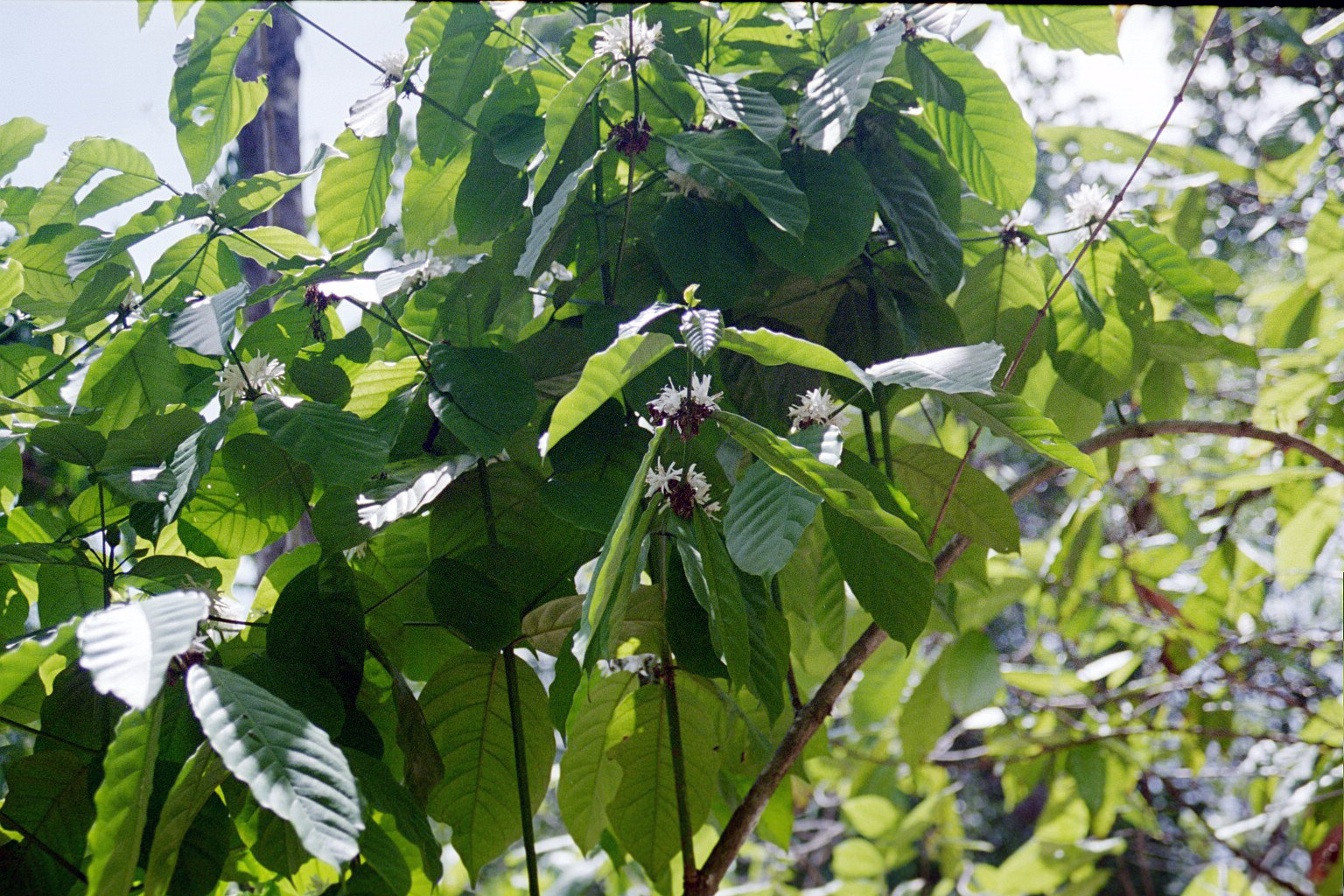 |
| Black Pepper |
Black pepper was once so valuable that it was held in more
esteem than gold. It is native to the Western Ghats of Kerala, India
and began its journey about 4,000 years ago. In classical times
tributes were paid in pepper, both Attila the Hun and Alaric I a Visigoth
demanded pepper as Rome's ransom. Black pepper was one of the spices
Queen Isabella of Spain sent Columbus in search of.
http://www.theepicentre.com/Spices/pepper.html
Photo:
http://www.templespice.com/item.asp?idProduct=4 |
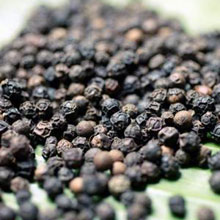
|
| Mangoes |
Mangoes originate in Southeastern Asia in what is now India
about 4,000 years ago. They grow on evergreen plants that can reach 60
ft in height. The have a large seed which allows them to spread
naturally. They also spread with the religion of Buddhism.
http://www.hungrymonster.com/FoodFacts/Food_Facts.cfm?Phrase_vch=Mangoes&fid=5435
http://freshmangos.com/aboutmangos/
Photo: Mangoes, Sangre Grande, Trinidad, West Indies by Karen Retford 2003 |
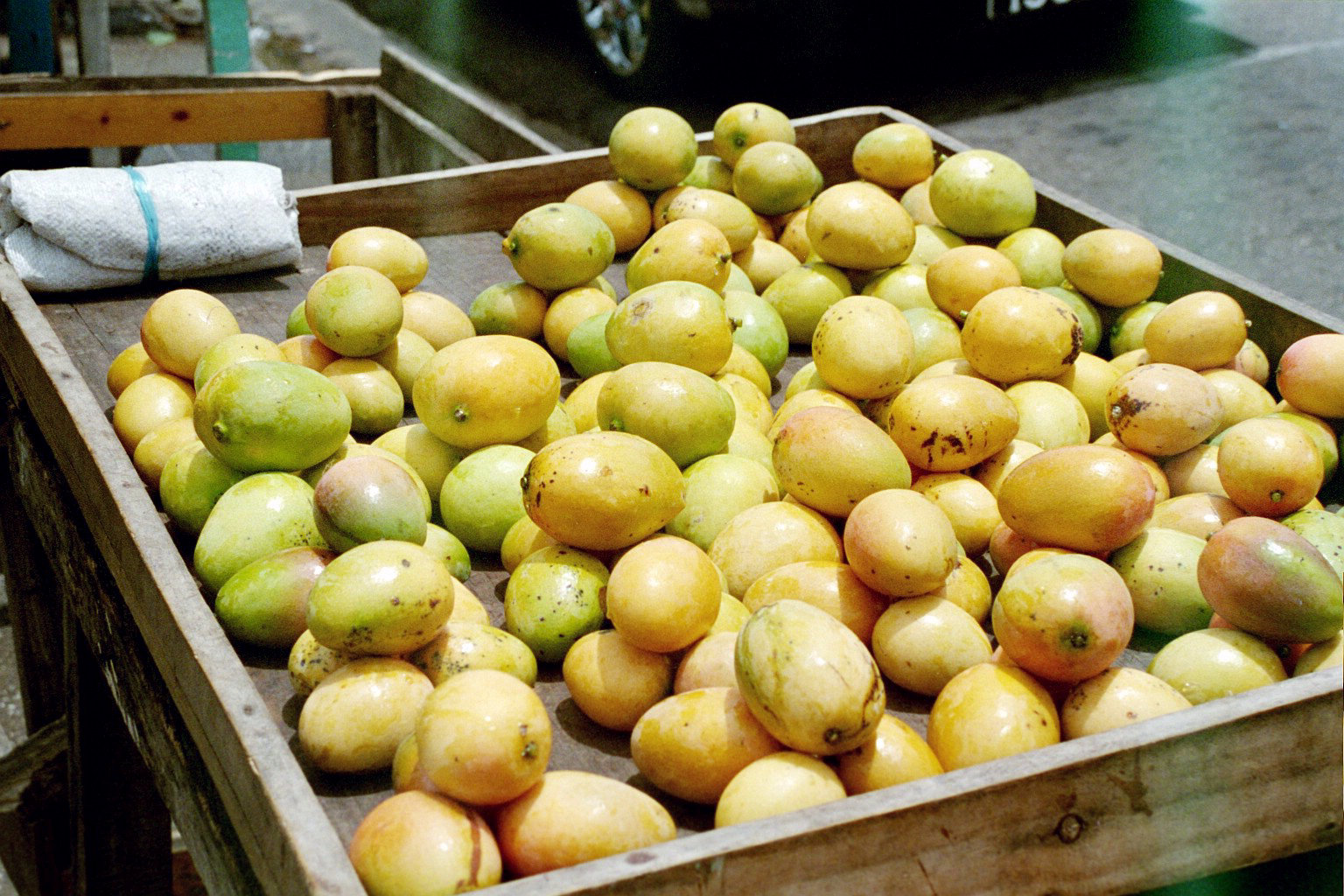 |
| Coconut |
The coconut is native to the Pacific. It is believed
that coconuts spread to much of the tropics on ocean currents.
Coconuts appear in ancient Sanskrit writing more that 2,000 years ago.
They grow on palm trees. Coconuts play an important role in East
Indian culture and religion.
http://www.plantcultures.org.uk/plants/coconut_history.html
Photo: Coconut palm, Matura, Trinidad, West Indies by Karen Retford 2003
|
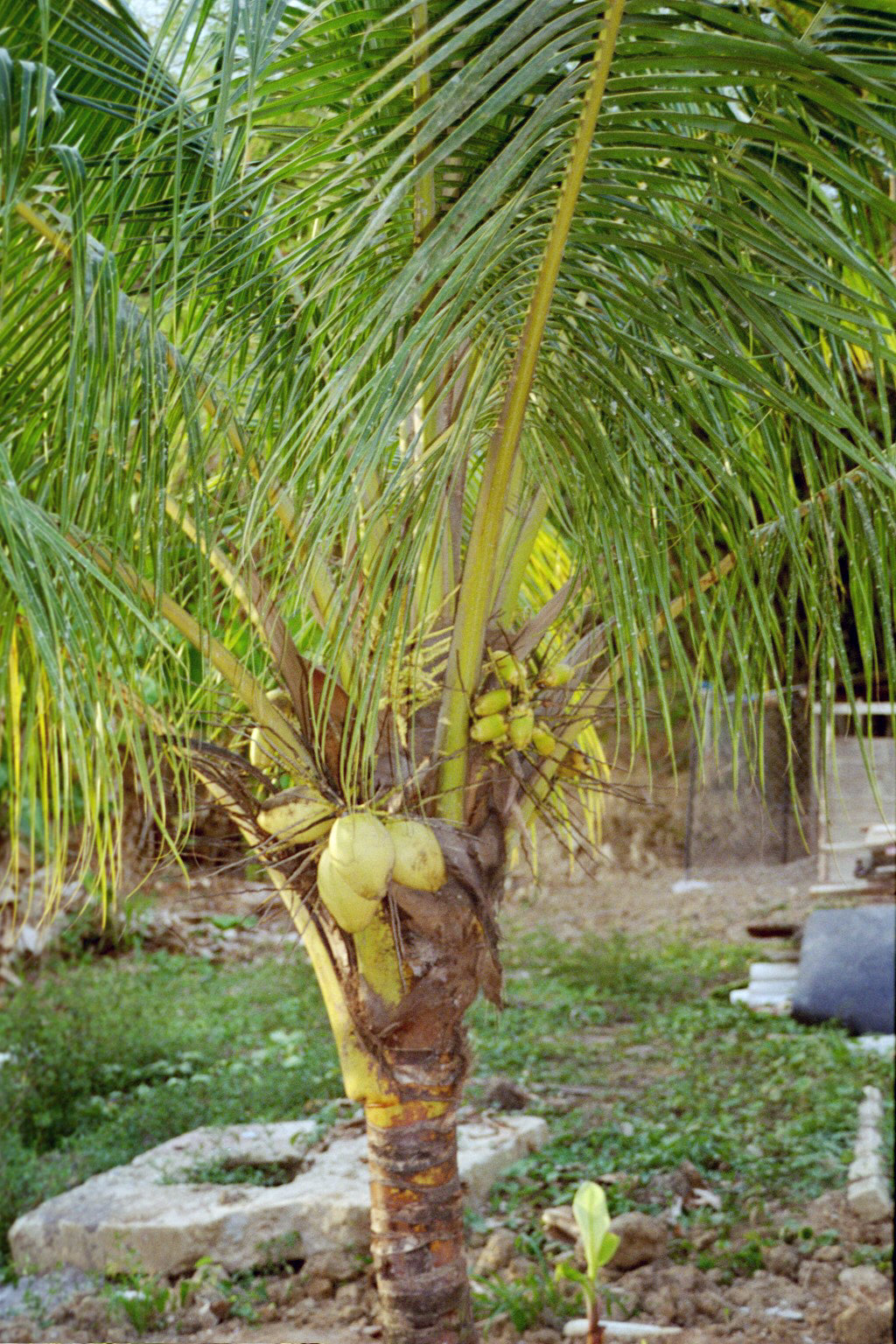 |
| Avocado |
The avocado is native to Mexico, Central America, and parts
of South America. It was once enjoyed by Aztecs, Toltecs, Incas, and
Mayans. The Aztecs called the avocado ahuactl. It
is believed that the Spanish Conquistadores couldn't pronounce it, so they
called it aguacate. The first published record in Spain of the avocado
was in 1518 by Martin Fernandez de Enciso.
http://whatscookingamerica.net/avacado.htm
Photo:
http://www.hort.purdue.edu/ext/senior/fruits/avocado1.htm
|
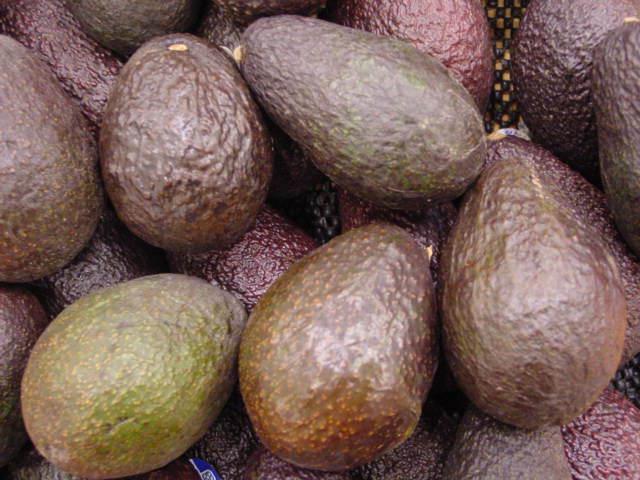 |
| Tomato |
The cultivated tomato is believed to have originated in the
Peru, Ecuador, Bolivia region of the Andes. Today this same area has a
large variety of both cultivated and wild tomatoes. The word tomato
comes from the word tomati used by the Aztecs.
Italians were the first Europeans to cultivate and eat the tomato around
1554. The Italians called it poma d' oro or gold apple,
suggesting the early varieties were yellow.
http://plantanswers.tamu.edu/publications/vegetabletravelers/tomato.html
Photo:
www.tastefulgarden.com
|
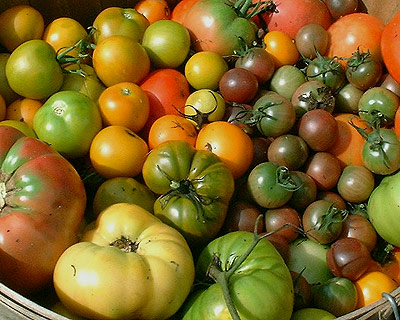 |
| |
Archeological evidence suggests that the potato originated
in Peru. The potato was a source of nutrition for people living in the
area 10,000 years ago. The Mochia, Chimu, and Incas, developed frost
resistant varieties and called it papa. The potato was a
staple in a mainly vegetarian diet.
http://collections.ic.gc.ca/potato/history/index.asp
Photo:
http://www.sheridangardens.com/Vegetables/potatoes.jpg
|
 |
| Corn |
There is archeological evidence that suggests that corn was
in the Americas long before there were people. Fossil pollen grains
have been found in sediments from beneath Mexico City said to be 80,000
years old. It is believed to have come from the Mexican plateau or the
highlands of Guatemala. Corn belongs to the grass family.
http://www.ontariocorn.org/classroom/history.html
Photo:
http://www.veryvera.com/images/recipes/multicoloredcorn.jpg
|
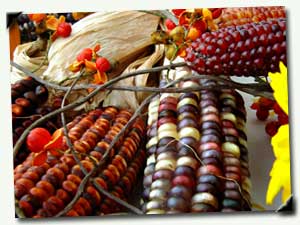 |




